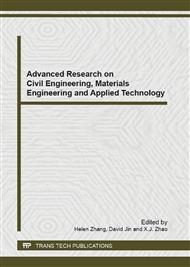p.453
p.457
p.463
p.468
p.473
p.477
p.482
p.486
p.492
Research on Applied Technology with the Characteristic of the Spatial Fresnel Diffraction Field of a Circle Aperture Illuminated by a Hyperbolic Secant Optical Pulse
Abstract:
Based on the Fresnel diffraction theory and the principle of Fourier transformation, an equation is put forward to analyze the spatial diffraction intensity distribution of a circle aperture illuminated by a hyperbolic secant optical femtosecond pulse. The spatial diffraction intensity distributions are determined by the distance, the radius of the circle aperture, the Fresnel number, the width and the central wavelength of the hyperbolic optical pulse. Number calculation shows that when the radius of the circle aperture is definite, the spatial diffraction intensity is a function of the distance z. If the distance is definite, the spatial diffraction intensity is a function of the radius of the circle aperture. In a definite extent the spatial diffraction intensity remains approximately a constant. A constant spatial intensity distribution is good for optical imaging and laser fusion.
Info:
Periodical:
Pages:
473-476
Citation:
Online since:
December 2013
Authors:
Price:
Сopyright:
© 2014 Trans Tech Publications Ltd. All Rights Reserved
Share:
Citation:


